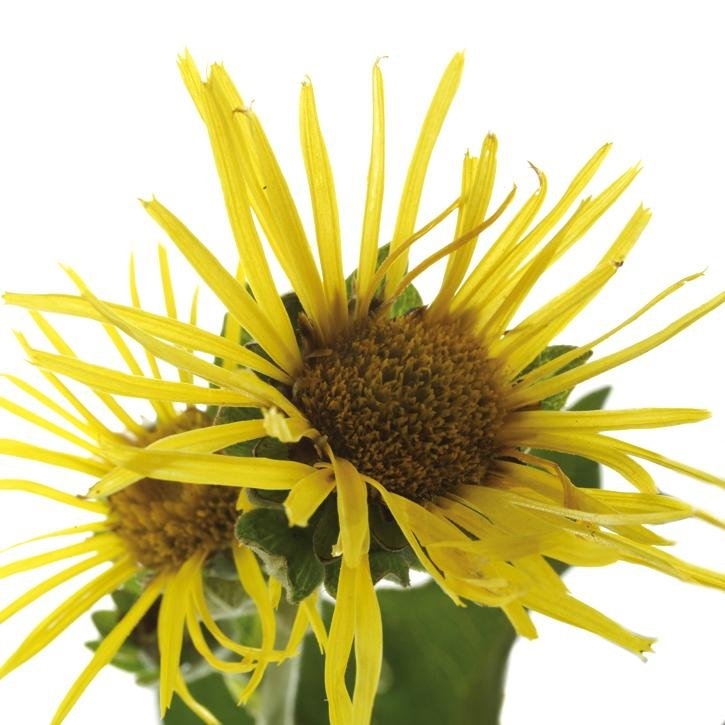Perennial plant that might grow as high as an average adult human being when the soil provides the nutrients and requirements for the plant to completely develop; it’s considered one of the largest plants. Leaves are big, oval-shaped, pointy and white on the back with pronounced veins. Leaves are soft at touch with a toothed perimeter. The basal ones are larger and might be up to
Blooming takes place in May. Harvesting is to be done until mid-autumn and plants older than two years of age are to be selected, from them the root and rhizome are taken. The rhizome should be cut in fine slices to facilitate their further desiccation. This process of desiccation should always be performed at temperatures lower than 40° C and in a well-ventilated area. The root releases a strong and penetrating odor.
It is called Helenium as the legend states the plant sprang from the tears of Helena of Troy.
The root and the rhizome are used.
Internal use
External use
Eczemas, hives, wounds, ulcers.
Real Farmacopea Española, Suplemento 1999.
Real Farmacopea Española, Suplemento 2001.
Pharmacopée Française IX Édition.
Plantas Medicinales. Thérapeutique-Toxicité. Christiane Vigneau. Masson, Paris 1985.
Herbal Drugs and Phytopharmaceuticals. Norman Grainger Bisset (Ed). Max Wichtl. CRC Press.1994.
Plantas Medicinales y Drogas Vegetales para infusión y tisana. Edición española a cargo de: Salvador Cañogueral, Roser Vila, Max Wichtl.1998.
Matière Médicale. RR Paris- H. Moyse. Masson 1981.
The Complete German Commission E Monographs. Therapeutic Guide To Herbal Medicines. Mark Blumenthal. American Botanical Council 1998.
Fitoterapia Aplicada. J.B. Peris, G. Stübing, B.Vanaclocha. Colegio Oficial de Farmacéuticos de Valencia 1995.
Fitoterapia: Vademecum de Prescripción. Plantas Medicinales. Colaboran: Asociación española de médicos naturistas. Colegio Oficial de Farmacéuticos de Vizcaya.
Plantas Medicinales. El Dioscórides Renovado. Pio Font Quer.
Guía de Campo de las Flores de Europa. Oleg Polunin. Ediciones Omega S.A. Barcelona, 1977.
Pharmacognosy 9th edition. Varro E. Tyler – Lynn R. Brady – James E. Robbers.
Farmacognosia. G.E. Trease y W. C.Evans. CECSA.
Plantas Medicinales. Margarita Fernandez y Ana Nieto. Ed Universidad de Navarra. EUNSA 1982.
100 Plantes Medicinales. Max Rombi. Romart 1998.
Pharmacognosy, Phytochemistry, Medicinal Plants. Jean Bruneton. Lavoisier Publishing.
Enciclopedia de las Hierbas Medicinales. Tina Cecchini. Ed. de Vecchi S.A. 1995.
PDR for Herbal Medicines. Medical Economics Company, Montvale. Second Edition, 2000.
